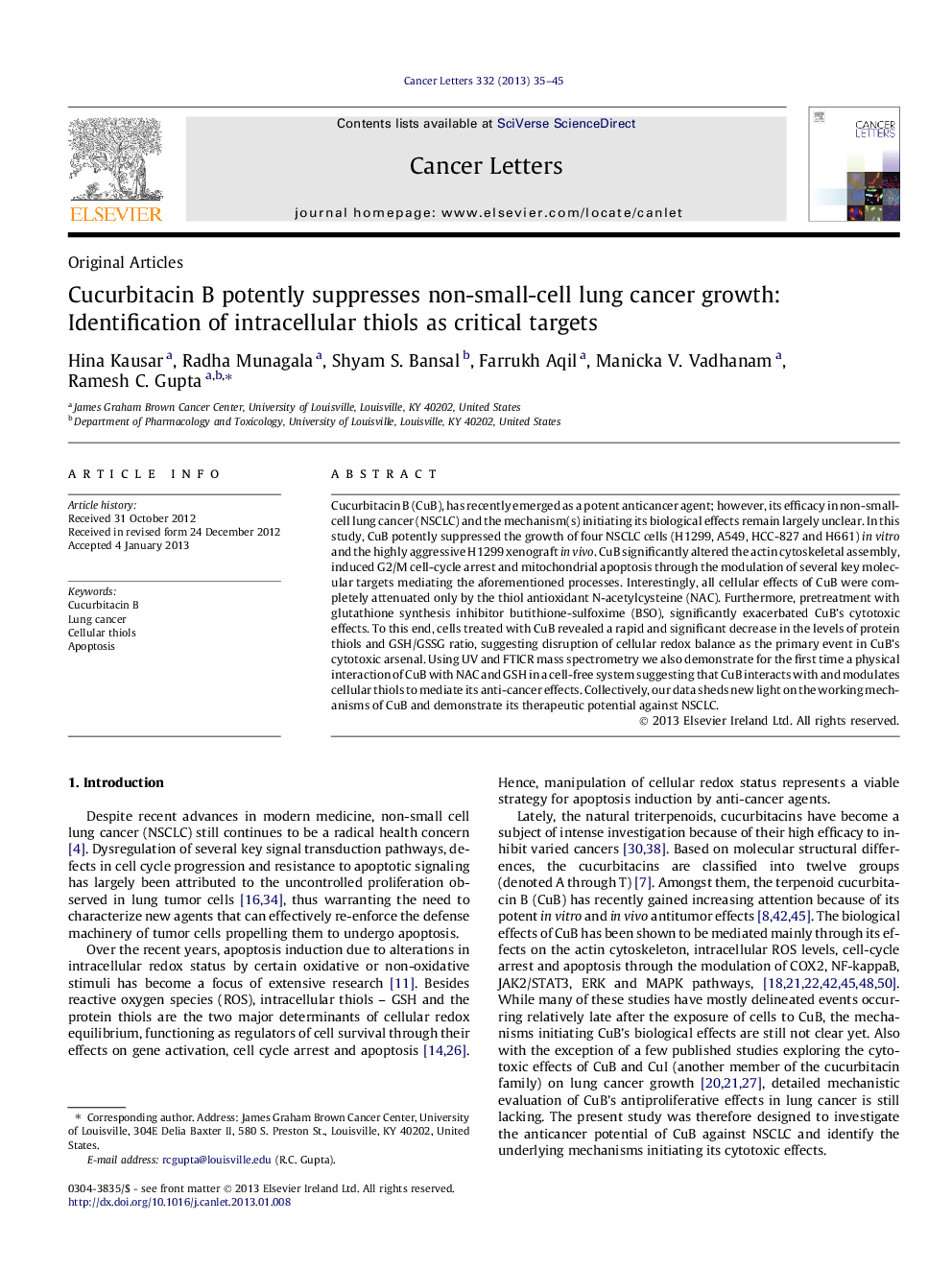| Article ID | Journal | Published Year | Pages | File Type |
|---|---|---|---|---|
| 10899997 | Cancer Letters | 2013 | 11 Pages |
Abstract
Cucurbitacin B (CuB), has recently emerged as a potent anticancer agent; however, its efficacy in non-small-cell lung cancer (NSCLC) and the mechanism(s) initiating its biological effects remain largely unclear. In this study, CuB potently suppressed the growth of four NSCLC cells (H1299, A549, HCC-827 and H661) in vitro and the highly aggressive H1299 xenograft in vivo. CuB significantly altered the actin cytoskeletal assembly, induced G2/M cell-cycle arrest and mitochondrial apoptosis through the modulation of several key molecular targets mediating the aforementioned processes. Interestingly, all cellular effects of CuB were completely attenuated only by the thiol antioxidant N-acetylcysteine (NAC). Furthermore, pretreatment with glutathione synthesis inhibitor butithione-sulfoxime (BSO), significantly exacerbated CuB's cytotoxic effects. To this end, cells treated with CuB revealed a rapid and significant decrease in the levels of protein thiols and GSH/GSSG ratio, suggesting disruption of cellular redox balance as the primary event in CuB's cytotoxic arsenal. Using UV and FTICR mass spectrometry we also demonstrate for the first time a physical interaction of CuB with NAC and GSH in a cell-free system suggesting that CuB interacts with and modulates cellular thiols to mediate its anti-cancer effects. Collectively, our data sheds new light on the working mechanisms of CuB and demonstrate its therapeutic potential against NSCLC.
Related Topics
Life Sciences
Biochemistry, Genetics and Molecular Biology
Cancer Research
Authors
Hina Kausar, Radha Munagala, Shyam S. Bansal, Farrukh Aqil, Manicka V. Vadhanam, Ramesh C. Gupta,
